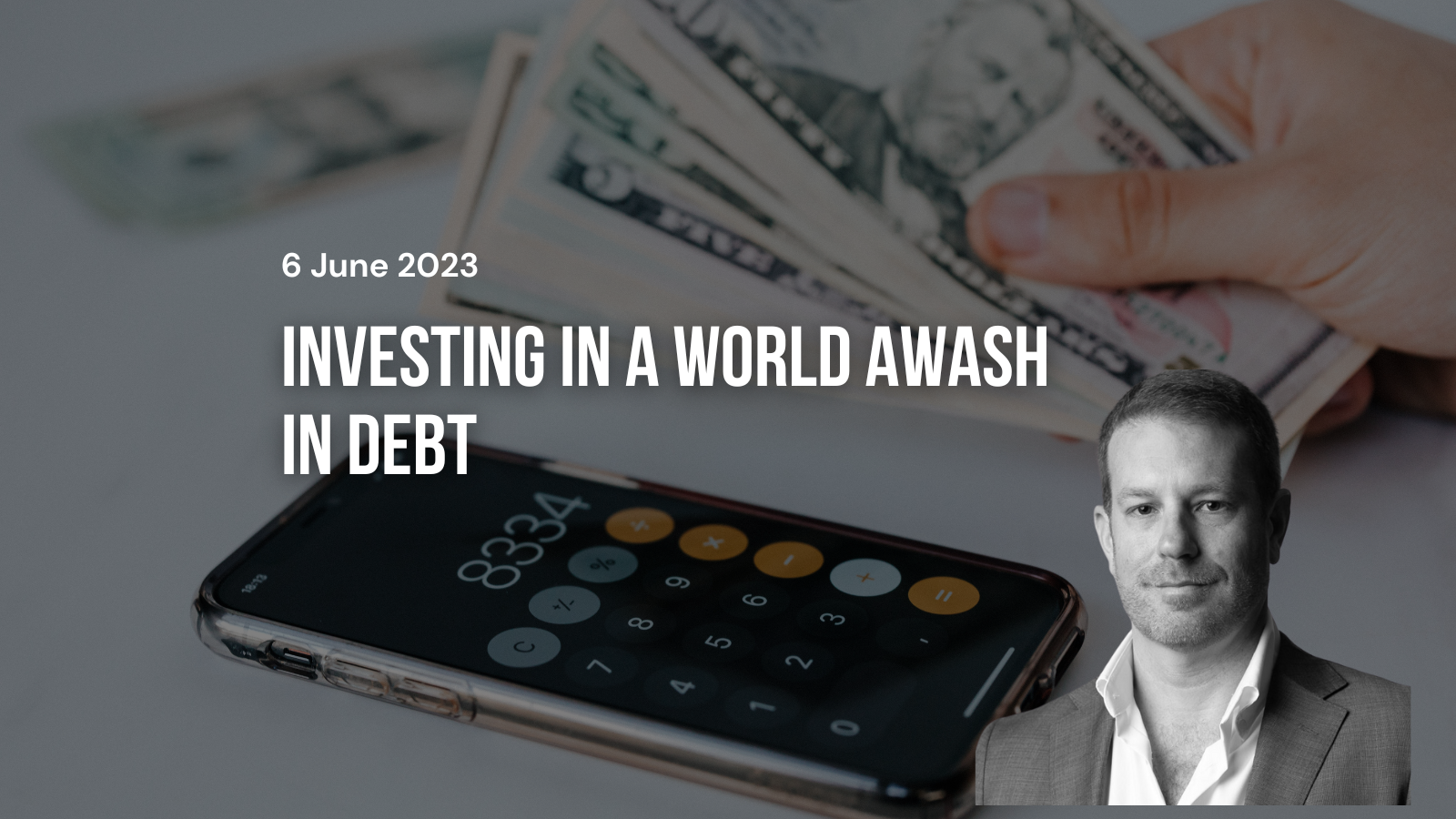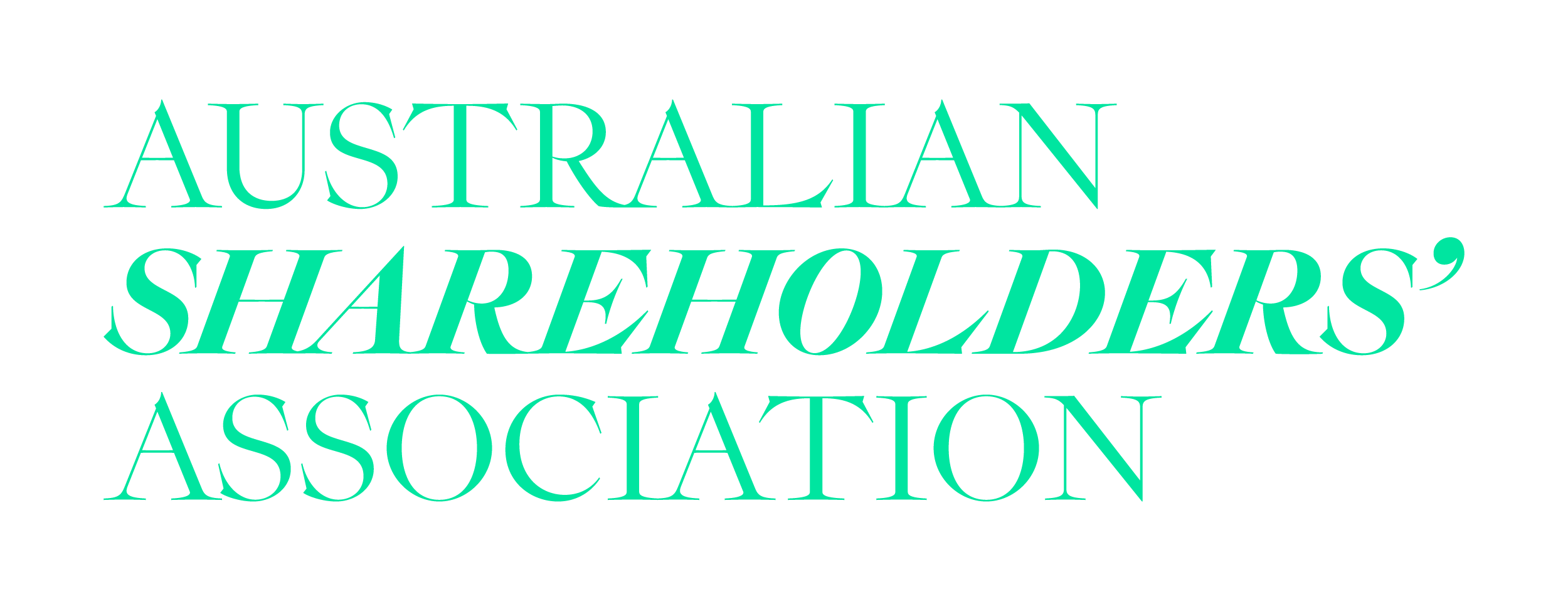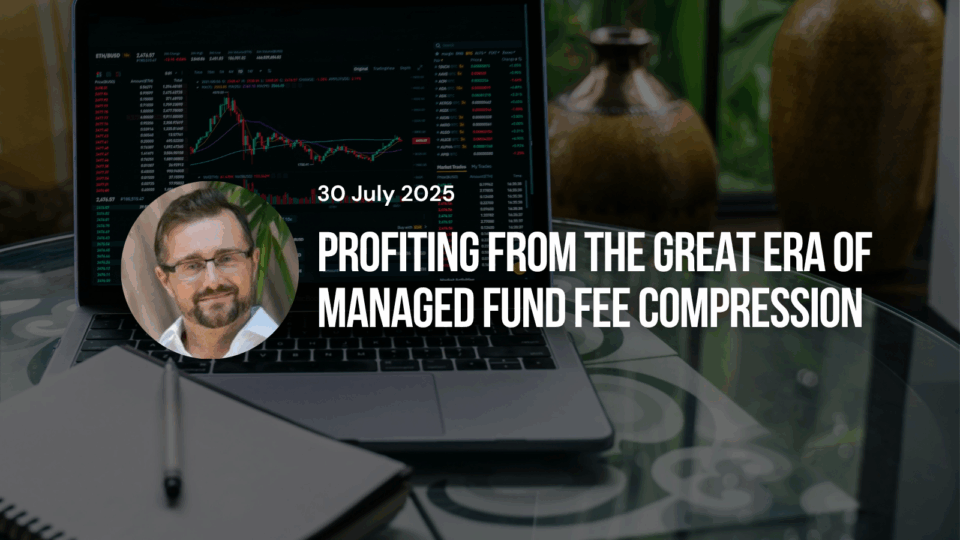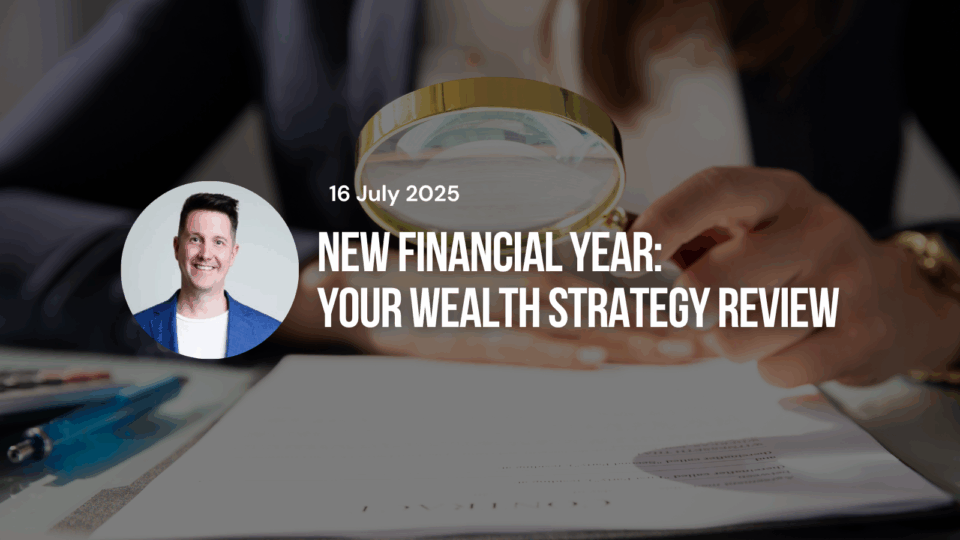
Investing in a world awash in debt
By Mark LaMonica, Director, Morningstar
6 June 2023
The world is buried under a staggering pile of debt. I recently spoke at the Australian Shareholder’s Conference in Sydney about it, and how the consequences of our collective borrowing binge will be felt for years to come.
The global response to the GFC and COVID was mind-blowingly complex when examined in detail. A myriad of programs spung up around the world to deal with the immense fallout from the twin crises. But zooming out from the detail and it becomes simple to summarise. Governments borrowed a pile of money. Interest rates were lowered to unprecedented levels and the monetary system was flooded with liquidity to encourage everyone else to borrow as well.
This approach worked remarkably well. Economic pain was minimised and everyone did exactly what central bankers and political leaders wanted them to do. The only problem with the instant gratification of debt fuelled spending is that someday you need to pay it back.
How big is our global debt problem?
Big. S&P recently put out some commentary on the size of the global debt problem. Total global debt hit $453 trillion in 2022. It equates to 349% of global GDP. That is over $56,000 for every man, woman, and child on earth.
The total government debt to GDP percentage increased 76% between 2007 and 2022. It sits at 102% of GDP. Non-financial corporate debt rose 31% to 98% of GDP. Consumer debt was up only 7% to 64% of GDP. The financial sector held steady at 85% of GDP.
S&P also pointed out that the productivity from debt has declined. Hence the massive increase when compared to GDP levels. The world is like a drug addict that needs to take on more and more debt just to get the same economic high.
What are the implications of the debt binge?
There is a great deal of talk about the mortgage cliff. This will undoubtably cause issues for individuals and for the economy in Australia. But confining it to the mortgage market in Australia is minimising the problem.
S&P estimates that 35% of the debt in the world is floating. That means that the interest rate increases that have occurred to date would result in roughly $3 trillion dollars in increased debt servicing costs.
For a company that may be in your portfolio that means less profits. Less money to invest in the business. Less money to pay you in dividends. Governments and consumers will have less money to pump into the economy.
And the effect from higher interest rates takes a while to be felt. Economists estimate it takes 12 to 18 months to work their way through the economy. And as we pass a year into the tightening cycle the first interest rate increases may only be starting to be felt now. Fixed rate debt will expire and have to be replaced with new debt at higher interest rates. This will compound the floating rate issues S&P outlined.
What does this mean for investors?
It is a near certainty that we will continue to see implications as the world adjusts to higher levels of interest rates on the pile of debt we’ve run up. We’ve seen implications so far with the banking issues highlighted by Silicon Valley Bank and Credit Suisse and the ongoing issues with First Republic Bank. There are also likely to be issues related to private asset valuations.
These issues are likely to continue to pop up. S&P identified a couple problem areas. The first was Chinese companies. The credit rating agency took a sample of more than 6000 Chinese corporations and found that the average debt to earnings ratio was 6x in 2021. That is twice the global level. In the US S&P found that 36% of companies in September 2022 had a credit rating of junk status. That is double the figure from the same month in 2007.
It seems likely we could see more areas of concern. Perhaps it is more problems in the banking sector. Maybe the opaque world of private debt that so many investors have sought out for extra yield. It could be the office REIT sector where asset valuations have dropped and vacancies have risen. I don’t have a crystal ball and neither does anyone else.
All companies benefited from the era of low interest rates and the flood of capital flowing through the economy. Some of these companies are unlikely to survive an environment with higher priced capital and less access to funding.
How can investors adjust their portfolios?
As investors we are constantly being told to adjust our portfolio based on near term market conditions. Encouraged by compelling pitches we churn our portfolio into poor outcomes. In that spirit consider the suggestions below as a long-term reorientation of your investment approach.
As economic conditions change over the years and decades ahead we want to own companies that have the flexibility to respond. This starts with adapting to evolving competitive environments which is why great investors seek out companies with sustainable competitive advantages or moats. But it also means having the financial flexibility to enable the continued investment in the business and the ability to reward shareholders with dividends and buy backs.
A company with financial flexibility has a reasonable level of debt and the ability to meet their day-to-day spending needs with internally generated cash. Our analysts assess the financial condition of a company as part of their Uncertainty Rating and the Capital Allocation Rating.
The Uncertainty Rating is an assessment of the confidence our analyst has in their assessment of the future prospects of a company. This is a proxy for the risk inherent in the business which contributes to the range of outcomes possible for the company. There are several factors that go into this rating but financial risk plays a large part. A company with precarious finances is more likely to go out of business. Look for a company with a low or medium Uncertainty Rating.
The Capital Allocation Rating assesses the balance sheet, investment decisions and shareholder distributions of a company. Balance sheet strength signals resilience to whatever the future holds.
If you don’t have access to our analyst reports there are ways you can assess the financial strength and flexibility of a company on your own. Look at the overall levels of debt and cash on the balance sheet. Review the debt-to-equity ratio which is an assessment of leverage. They tend to vary significantly between industries, but you can compare two companies or a company and the industry average. Lower is better.
A more detailed review of the financial statements can identify the mix between fixed and floating rate debt and the upcoming maturity schedule of existing debt. A company with fixed rate debt maturing far in the future is insulated from the run up in interest rates and the need to roll over debt in a more restrictive credit environment. Looking at a company’s credit rating can also indicate relative costs of funding and continued access to debt.
The future is unknowable. We could of course return to a more speculative environment at any time. But there are certain realities that we can’t wish away. The mountain of debt we’ve collectively accumulated is one such reality. Focusing on quality companies is an investment approach that never goes out of fashion.
I offer up some examples that can hopefully form the basis for investors to do their own analysis on holdings in their portfolio and selecting new investments.
Evaluating individual shares
Computershare (ASX: CPU) is not an exciting business. Then again investing isn’t about excitement. Computershare is leading provider of share registry services and several adjacent records management services.
Is the company resilient in the face of competition?
The first thing we want to look for when trying to find a reliant company is how it may respond to an evolving competitive environment. Operating a business in an environment with inflation and uncertain economic growth can be difficult. Inflation and slower growth cause businesses and consumers to scrutinise their spending and can lead to shifts in demand.
A company with a sustainable competitive advantage or moat has advantages in any environment. Those advantages can come to the forefront during difficult times. Our analysts give Computershare a wide economic moat due to switching costs and cost advantages.
High switching costs mean there are barriers to customers moving from Computershare to their competitors. There are few benefits from a company moving their share registry from Computershare and significant operational, reputational, and regulatory risks from moving on from the industry leader. Computershare has a close to 100% customer retention rate.
Records management is a business where there are significant advantages in scale. And Computershare is the industry leader which gives them marginal cost advantages over competitors. Multi-year contracts and a high retention rate make it difficult for competitors to build the scale needed to become competitive.
A company with a sustainable competitive advantage or moat has advantages in any environment. Those advantages can come to the forefront during difficult times. Our analysts give Computershare a wide economic moat due to switching costs and cost advantages.
High switching costs mean there are barriers to customers moving from Computershare to their competitors. There are few benefits from a company moving their share registry from Computershare and significant operational, reputational, and regulatory risks from moving on from the industry leader. Computershare has a close to 100% customer retention rate.
Records management is a business where there are significant advantages in scale. And Computershare is the industry leader which gives them marginal cost advantages over competitors. Multi-year contracts and a high retention rate make it difficult for competitors to build the scale needed to become competitive.
What could go wrong for the company in the future?
As investors we care about the ability of business to continue to generate earnings into the future. The underlying value of the business is based on these future results. All businesses face risks that may impact their ability to continue to generate profits. But these risks vary based on the nature of each business. Our analysts capture the inherent risks to future cash flows for each company they cover in the Morningstar Uncertainty Rating.
Before investing in any company an investor should consider what could go wrong. Will a slowing economy impact the company significantly or are the products and services they sell resilient to economic conditions? What is the degree of competition in the industry the company operates in? Is there the potential for disruptive technology? Does the country control pricing conditions or are they a price taker? Does the company have the financial strength to weather the vicissitudes of a uncertain future?
Computershare receives a Medium Uncertainty Rating which is our second lowest level. Like any business there are risks but overall we think they are relatively subdued with Computershare. They consist largely of the chance of lower interest rates which reduce the amount Computershare earns on client funds they hold, increased price competition given their dominant share in the registry business and integration risk of acquisitions.
One area we don’t see material risks is due to the financial condition of the company. Computershare’s business model is capital light and there is recuring fee revenue which makes future cash flows more predictable. The debt to equity is reasonable at 1.34 and the cash flows are resilient to economic cyclicality. An example of this resilience is the fact that Computershare did not need to raise any equity capital during the 2020 COVID recession and share market decline.
Our Morningstar Investor subscription allows you to screen stocks based on your own metrics, including those that are associated with quality. To access our Premium investment screener to find stocks that meet your investment criteria, take out a free, four-week trial of Morningstar Investor.^
Quality factors
One way to build resilience in a portfolio is through the simple act of diversification. Single company risk is reduced by the simple act of having more holdings. One of the easiest ways to diversify is by buying an ETF.
Given the overall debt levels in the economy this diversification is further enhanced by finding an ETF which specifically seeks out companies in strong financial condition. This is where a factor ETF can come into play. A factor investment approach seeks to build a portfolio based on desired attributes that have historically provided positive investment outcomes.
The VanEck MSCI International Quality ETF (ASX: QUAL) is one such example which receives a Silver Medallist Rating from our analysts. The ETF applies a screen to identify high-quality shares in 22 developed market countries based on three factors: low financial leverage, high return on equity and reliable earnings growth.
Return on equity is a figure that measures how effectively a company generates profits. A high return on equity can be an indication of a sustainable competitive advantage and is similar to the high return on capital that our analysts use.
Meanwhile reliable earnings growth is a screen that can eliminate cyclical companies whose earnings vary significantly according to the business cycle. This resilience in the face of economic conditions can provide protection for an investor.
Finally low degrees of leverage is a key component of resilience. It can provide downside protection in worsening economic conditions and allow a company not just to survive but allow continued investment in the business. This can come through internally generated cash flows and continued access to debt markets in more constrained environments.
We can see the impact of these quality screens on the overall portfolio. Over 90% of holdings receive a Wide or Narrow Moat Rating from our analysts compared to under 70% in the Morningstar Category of Equity Large Blend ETFs and Funds.
An uncertain future
Any investment should be aligned to the goals of each individual investor and suit their temperament and intellectual approach to investing. Successful investing is long-term investing, and that alignment means less of a chance you will churn your portfolio.
In the face of the shocking degree of debt built up since the GFC there is a case to be made that assessing the resilience of your portfolio may be a valuable exercise for many investors. The future is of course uncertain but buying quality companies is an investment style that has paid off for long-term investors in a variety of market conditions. Are there examples of quality investments in your portfolio? I would love to hear the approach you are taking at mark.lamonica1@morningstar.com
This article has been prepared by Morningstar Australasia Pty Ltd (AFSL: 240892). The information is general in nature and does not consider the financial situation of any individual. For more information refer to our Financial Services Guide at www.morningstar.com.au/s/fsg.pdf . You should consider the advice in light of these matters and if applicable, the relevant Product Disclosure Statement before making any decision to invest. Past performance does not necessarily indicate a financial product’s future performance. To obtain advice tailored to your situation, contact a professional financial adviser.
^This offer is limited to new clients and cannot be used in combination with any other promotional offers and cannot be used to extend an existing Investor Membership. One free trial per household. Morningstar is licensed to provide our subscription service to Australian residents only.






